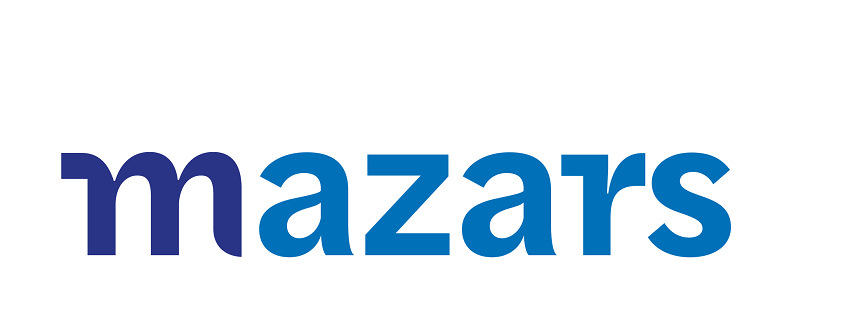Finance News by Mazars Romania April 2023
Fri | 28.04.2023
Accounting/audit/tax
Romania’s race to improve VAT collection rates, by Mazars
The Romanian tax authorities have introduced a series of measures in an attempt to reduce its VAT deficit and combat the impact of fraud on VAT collection.
According to the European Commission VAT Gap Report, in 2020, VAT collection within the European Union (EU) increased by around 2% compared to the previous years.
However, while the VAT gap decreased at the EU level, VAT collection remains a significant problem in Romania. Romania recorded the highest VAT gap in 2020, with a VAT revenue loss of 35.7%. In comparison, the lowest VAT gaps for that year were recorded in Finland (1.3%), Estonia (1.8%) and Sweden (2%).
In Romania, the high VAT gap is not a new issue. Significant VAT collection losses have been a major challenge for the tax administration for a long time. In 2019 and 2020, Romania lost around one-third of the VAT that should have been collected.
In response, the Romanian tax authorities have implemented a series of measures to reduce the deficit and combat fraud.
Read more info HERE.
Energy crisis and transfer pricing set-up of CEE limited-risk entities, by Mazars
The regional and global context are lands of change for adaptation. As the energy crisis becomes more and more spread, we are facing significant risks, especially when talking about transfer pricing.
In Romania, the tax authorities have not yet published guidance on how to deal with the effects of the energy crisis from a transfer pricing perspective. The increase in energy prices has a significant impact on the cost structure of limited-risk entities and manufacturing entities in particular. Considering the OECD
Guidelines, limited risk entities may incur losses in certain instances, depending on the nature of risks assume and market conditions. The Transfer Pricing analysis should consider 2022 extraordinary market
conditions. So, in principle, Transfer Pricing models established under normal market conditions may need to be updated.
Read more info HERE.
R&D tax incentives, by Mazars
The promotion of R&D activities is a priority for many CEE countries. It means businesses that carry out basic, applied research and experimental development (R&D) are eligible for a range of tax reliefs.
The Romanian tax legislation provides tax incentives for R&D activities applicable at both company and employee levels.
- The tax incentives applicable at company level consist of an uplift for corporate income tax deduction purposes of eligible R&D expenses. This provides an additional deduction of 50% of the eligible R&D expenses and accelerated depreciation for equipment and apparatus used in R&D activities.
Read more info HERE.
Bold leadership for a sustainable future: Mazars C-suite barometer 2023
Mazars’ latest C-suite barometer shows that, while recognising the significant challenges of the past year, including inflation and economic instability, high energy prices, war and geopolitical tensions, leaders have a fighting spirit and positive outlook for 2023. Technology and sustainability stand out as their top two strategic priorities for the coming three to five years, with the C-suite investing in these areas to ensure their business is fit for tomorrow.
Main conclusions:
- Despite economic instability, growing energy prices and geopolitical tensions, most executives are optimistic about future growth. 86% have a positive outlook for growth in 2023.
- The external trends expected to have the biggest impact on businesses this year are: economic trends, including inflation and higher cost of living; energy prices and/or shortages; and the emergence of new technologies.
- Leaders are most confident in their ability to manage emerging technologies (54% very confident) and least confident coping with geopolitical instability (23% very confident), energy prices/shortages (27%), scarcity of talent (32%) and economic trends (33%) – these are also considered the main barriers to company growth.
Download the study from HERE.
Investing in CEE: Inbound M&A report 2022/2023, by Mazars
The beginning of 2022 signalled to what was to be a turbulent year for both European and global market, as Russia invaded Ukraine on 24 February. Trends that were already in play in 2021, rising inflation and higher borrowing costs, were greatly amplified. The war unleashed supply shocks, notably in the wholesale gas market.
Meanwhile, the imposition of economic sanctions against Russia further complicated the dealmaking landscape. Against this backdrop, supply-chain bottlenecks and labour shortages, a legacy of the pandemic, continued to dampen growth.
Dealmaking conditions could scarcely have been more challenging. Yet, as Mazars’ report reveals, the impact on M&A activity in the CEE region was much less pronounced than many initially feared. In fact – and with the exception of 2021, a somewhat anomalous record year for M&A – deal volumes and aggregate deal value in 2022 both reached new highs in CEE.
Key findings:
- Overall, CEE registered 846 transactions worth €39.2bn in aggregate.
- The number of transactions recorded in CEE in 2022 is higher than any annual total besides that posted in 2021, just eclipsing 2016’s €38.6bn.
- CEE was not alone in facing M&A headwinds – all parts of the world, without exception, were affected, even the advanced economies of Western Europe and North America both suffered sharper year-on-year declines in volume and value.
- CEE also remained a strong draw for international investment. The overall proportion of M&A transactions in the region involving cross-border sponsors rose to 64% in 2022, up four percentage points from the year before and easily the highest proportion in recent records dating back to 2015.
Download the study from HERE.
This article is provided by our Finance Partner, MAZARS Romania
2025
-
November (1)
-
October (1)
-
September (1)
-
July (1)
-
June (1)
-
April (1)
-
February (2)
-
January (1)
2024
-
November (1)
-
October (1)
-
July (1)
-
May (1)
-
March (1)
-
February (1)
-
January (1)
2023
-
November (1)
-
September (2)
-
August (2)
-
June (1)
-
May (1)
-
April (2)
-
March (1)
-
February (2)
-
January (2)
2022
-
December (3)
-
November (4)
-
October (3)
-
September (4)
-
August (3)
-
July (6)
-
June (4)
-
May (4)
-
April (8)
- Marketing News by diARK - April 2022
- Finance News by Mazars Romania - April 2022
- Experience the Perfect Chauffeur Transfer with David Intercar
- Mobility News by Business Lease - April 2022
- NRCC MEMBER IN SPOTLIGHT, WOLTERS KLUWER
- Crowe Romania and DeclaratiaUnica.ro engage in the automation of the single return form and the offering of personalized consultancy
- Cryptocurrency News by Bitcoin Romania, April 2022
- Legal News by BBW LAW - April 2022
-
March (6)
-
February (4)
-
January (5)
2021
-
December (3)
-
November (4)
-
October (2)
-
September (2)
-
August (1)
-
July (5)
-
June (3)
-
May (5)
-
April (4)
-
March (7)
- Cryptocurrency News by Bitcoin Romania, April 2021
- HR News by CNA International Executive Search Romania, March
- Real Estate News by CTP Invest, March 2021
- Sale-Purchase of Agricultural Land Located Outside Build-Up Areas
- MEET THE NRCC BOARD CANDIDATES 2021
- Fleet Management – Complete Makeover or Small Adjustments?
- Cryptocurrency News by Bitcoin Romania, March 2021
-
February (5)
-
January (6)
2020
-
December (2)
-
October (2)
-
September (3)
-
August (2)
-
July (6)
- NRCC Member in Spotlight Interview - Autonom
- Insolvency Proceedings: New Rules
- Member in Spotlight, UniCredit Bank
- Financing opportunities overview for large enterprises, SMEs and other organizations
- Companies: Simplification of Formalities
- Call for Leaders | What is your readiness score to benefit from the EU SURE initiative?
-
June (5)
-
May (8)
- The State of Alert. New rules for the collective proceedings
- The Retail Industry
- EU grants up to 6 Mil Euro for SME-s investment projects
- Member in spotlight, Heisterkamp Transportation Solutions
- State of Alert...What Is New
- The forced transformation of the automotive industry – Mazars analysis
- State of Alert in Romania
- Reducing the Impact of the Pandemic
-
April (6)
-
March (2)
2019
-
November (2)
-
July (1)
-
June (1)
-
March (2)
-
January (1)
2018
-
October (2)
-
September (1)
-
August (1)
-
July (3)
-
June (2)
-
May (1)
-
April (1)
-
March (3)
-
February (13)
- NRCC Elections 2018 - Elena Badea
- NRCC Elections 2018 - Loreda Dragomir
- NRCC Elections 2018 - Simina Fodor
- NRCC Elections 2018 - Manuel Herraiz Orti
- NRCC Elections 2018 - Tom Leene
- NRCC Elections 2018 - Mircea Moga
- NRCC Elections 2018 - Ronald Oort
- NRCC Elections 2018 - Razvan Pascu
- NRCC Elections 2018 - Alexandru Popescu
- NRCC Elections 2018 - Mihaela Tudor
- NRCC Elections 2018 - Loredana Van de Waart
- NRCC Elections 2018 - Edwin Warmerdam
- NRCC Elections 2018 - Philip Aarsman
2017
-
November (1)
-
September (1)
-
August (2)
-
May (1)
-
April (2)
-
March (1)
2016
-
November (1)
-
September (8)
-
June (1)
-
February (2)








